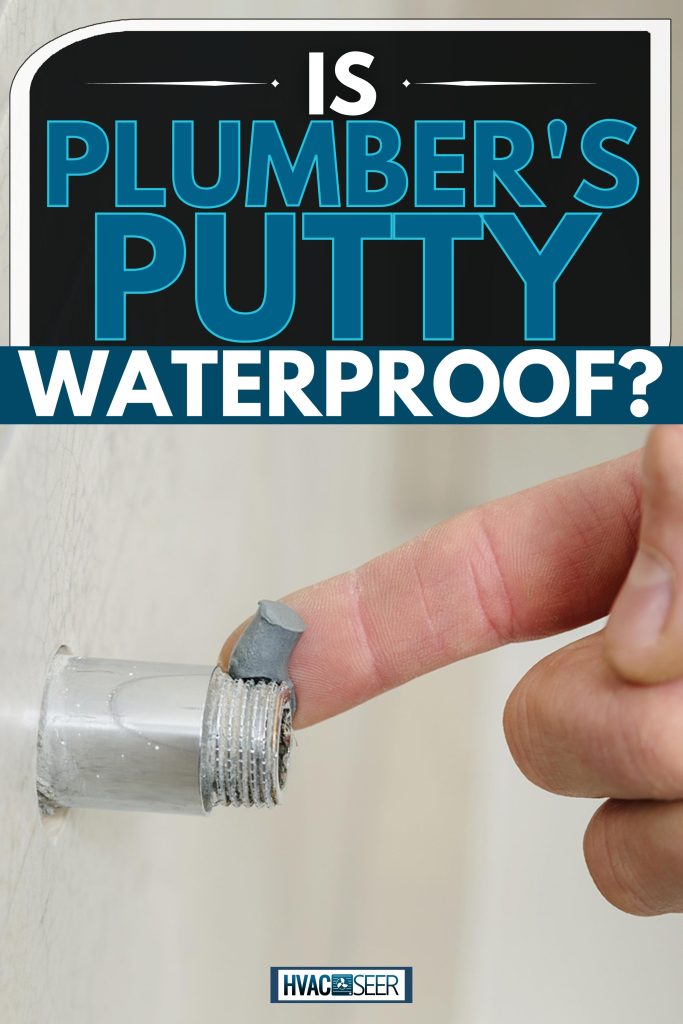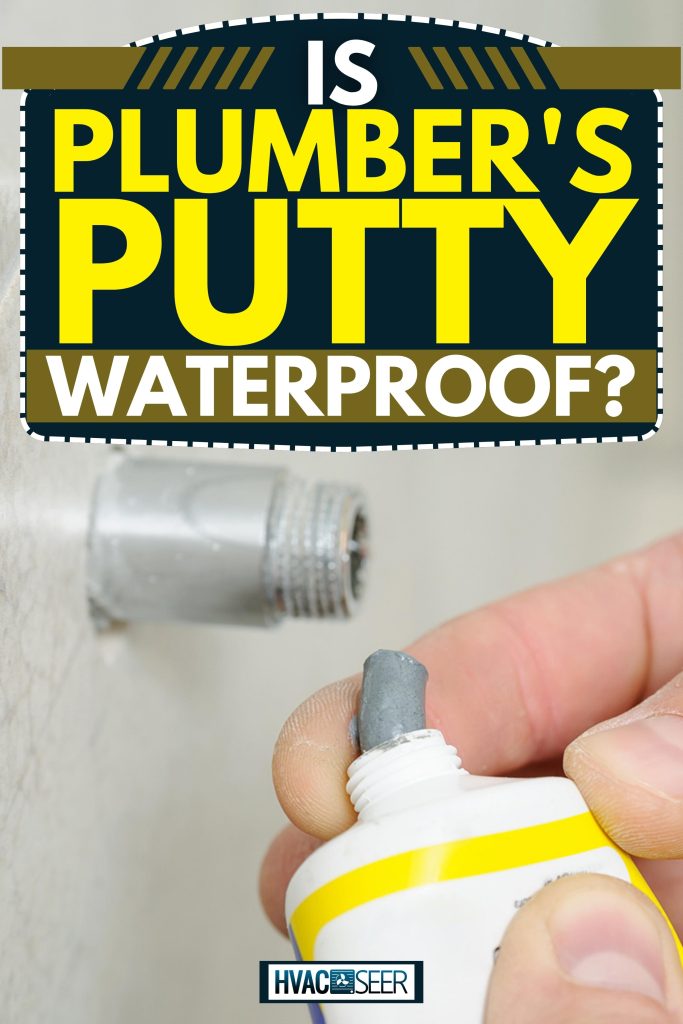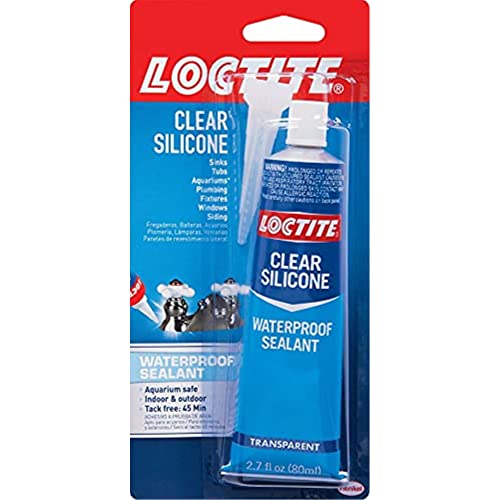Are you planning a DIY plumbing project and wondering whether you should use plumber's putty? Before you start, you need to know that not all sealants are created equal. In fact, some can be downright disastrous if used in the wrong way. So, is plumber's putty waterproof?
The short answer is no, but it's not that simple.
In this article, we'll dive deeper into the world of plumbing sealants and explore the properties of plumber's putty. So, if you want to avoid a plumbing disaster and ensure a watertight seal, keep reading!

What is Plumber's Putty?
If you're not familiar with plumbing, you might not know what plumber's putty is.
Simply put, plumber's putty is a soft, pliable sealing compound that is used to make watertight seals around faucets, drains, and other plumbing parts. It's a versatile tool that can be used in a variety of plumbing applications.
Plumber's putty is typically made from a combination of clay and oils, which gives it a soft and pliable texture. It is easy to work with, and it can be molded into any shape or size to fit the needs of your specific plumbing job.
Is Plumber's Putty Waterproof?
If you're looking for a reliable sealant for your plumbing projects, you may be wondering if plumber's putty is waterproof. The answer is not a straightforward yes or no. While plumber's putty is highly water-resistant, it is not entirely waterproof.
In this section, we'll explore the factors that affect waterproofing and the different types of plumber's putty available.
Factors that Affect Waterproofing
Several factors can affect the waterproofing capabilities of plumber's putty.
Quality of the Putty
High-quality plumber's putty is less likely to crack, shrink or crumble over time, which can compromise its waterproofing capabilities.
Surface for Application
The surface on which the putty is applied can also affect its waterproofing abilities. For example, a rough or uneven surface may not allow the putty to create a tight seal, which can cause water to seep through.
Water Temperature and Pressure
The temperature and pressure of the water that the putty will be exposed to are also crucial. If the water is too hot or under high pressure, it can cause the putty to break down over time, leading to leaks.
Type of Plumbing Fixture
This can also affect the waterproofing capabilities of plumber's putty. Some fixtures, such as toilets, require a stronger and more durable sealant than others.
Types of Plumber's Putty
There are several types of plumber's putty available, and each has its own unique properties and uses.
Clay and Linseed Oil Mixture
The most common type of plumber's putty is made from a mixture of clay and linseed oil. This type of putty is easy to work with and can be used on a variety of plumbing fixtures, including sinks, faucets, and drains. However, it is not recommended for use on plastic or rubber fixtures.
Silicone
Another type of plumber's putty is made from silicone. It is a more durable and long-lasting material.
Check out this silicone plumber's putty on Amazon.
Silicone putty is ideal for use on high-pressure plumbing fixtures such as toilets and showerheads and can withstand exposure to hot water and steam. However, it is more difficult to work with than clay-based putty and may require special tools for application.
Overall, while plumber's putty is not entirely waterproof, it is highly water resistant and can be used for a variety of plumbing projects.
By understanding the factors that affect waterproofing and choosing the right type of putty for your specific needs, you can ensure a reliable and long-lasting seal for your plumbing fixtures.
How to Apply Plumber's Putty
If you want to use plumber's putty to seal your plumbing fixtures, you need to know how to apply it properly.
Here are a few steps to follow:
Step 1: Clean the surface
You need to make sure the surface is clean and dry before applying the putty. Use soap and water to clean the area, and then dry it with a rag or towel.
Step 2: Warm up the putty
Take a small amount of putty and warm it up by rolling it between your hands. This will make it easier to mold and shape.
Step 3: Apply the putty

Roll the putty into a thin rope and apply it around the fixture. Make sure there are no gaps or spaces between the putty and the fixture, as this will cause leaks.
Step 4: Tighten the fixture
Once the putty is in place, tighten the fixture to create a watertight seal. Be careful not to overtighten, as this can damage the fixture.
Remember, plumber's putty is not a permanent solution and may need to be replaced over time. However, if applied correctly, it can provide a reliable seal for your plumbing fixtures.
What are the advantages and disadvantages of Plumber's Putty?
It's important to consider both the benefits and drawbacks of using plumber's putty before deciding if it's the right choice for your plumbing project.
Advantages of Plumber's Putty
One of the main benefits of plumber's putty is that it can be used on a variety of surfaces, including plastic, porcelain, and metal. It's also resistant to most chemicals and can withstand high temperatures, which makes it ideal for use in hot water applications.
Another advantage of plumber's putty is its longevity. It can last for years, with some tubs of putty still being pliable after 15 years. On average, you can expect your putty to last between 10-15 years before it needs to be replaced.
Plumber's putty is also easy to work with. It can be molded and shaped to fit around fixtures, creating a tight, waterproof seal. It is also relatively inexpensive compared to other sealing options such as silicone.
Disadvantages of Plumber's Putty
While plumber's putty is a great option for many plumbing applications, it does have some drawbacks.
One of the main disadvantages is that it can stain certain materials, such as granite. It is important to read the label of the putty before using it on porous surfaces to avoid any damage or discoloration.
Another downside of plumber's putty is that it can dry out over time, making it less effective at creating a watertight seal. However, this process can take years, and the putty can still be pliable for a long time after it has dried out.
Overall, plumber's putty is a reliable and long-lasting option for creating a watertight seal around plumbing fixtures.
While it does have some limitations, such as the potential to stain certain materials and the eventual drying out over time, it remains a popular choice for both professionals and DIY enthusiasts.
Alternative Products to Plumber's Putty
If you're looking for a substitute for plumber's putty, there are several options available.
Here are some of the most popular alternatives:
Silicone Caulk
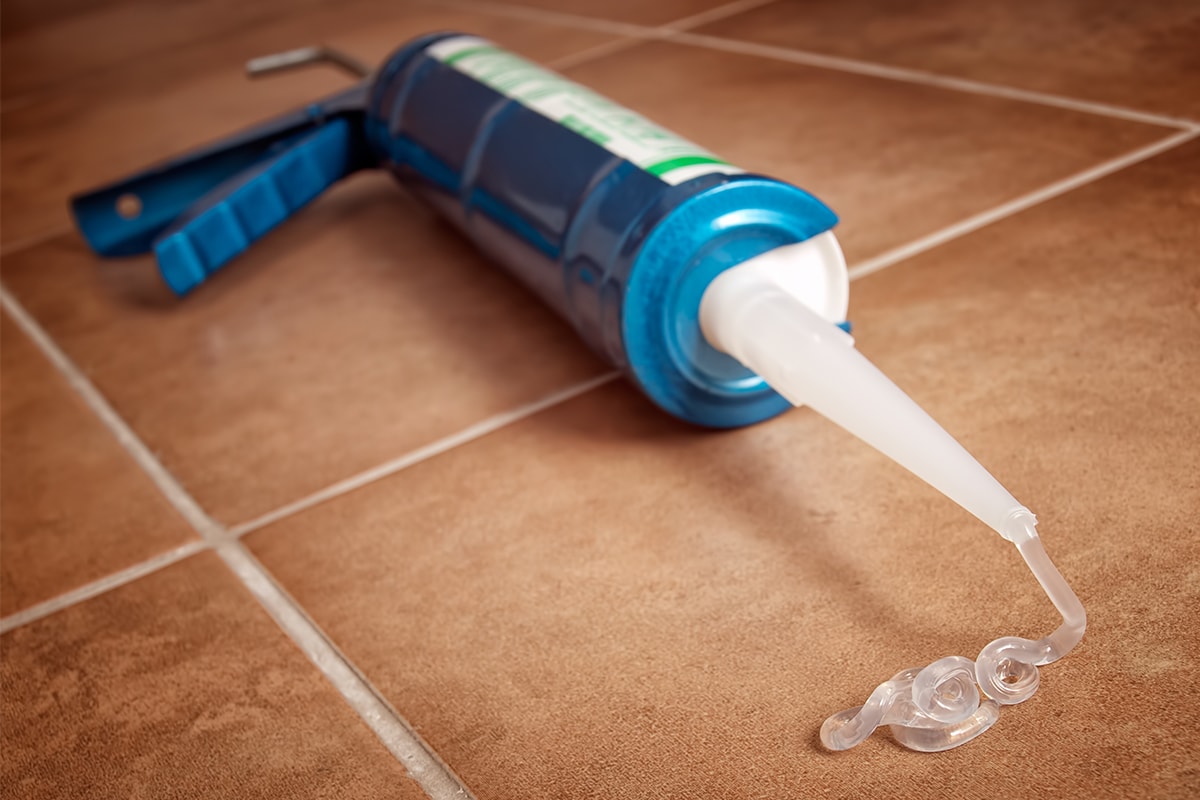
This is a semi-transparent solution used to fill up the sealing gaps or cracks between two surfaces.
Click this link to find this silicone caulk on Amazon.
It's 100% waterproof and doesn't turn pale over time. It's an excellent alternative to plumber's putty and is commonly used in plumbing applications.
Epoxy Putty
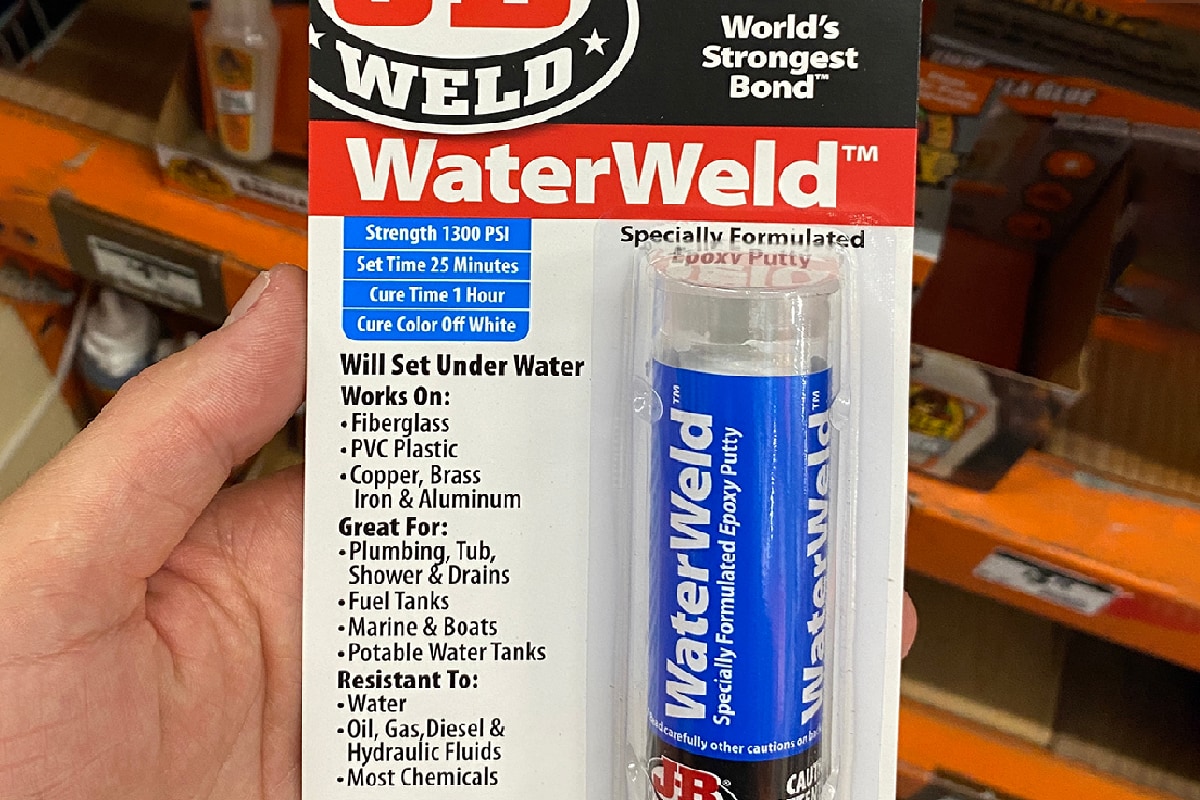
This is another suitable alternative to plumber's putty. It comes in a two-part compound mixture and goes on easily.


Find this epoxy putty on Amazon.
Epoxy putty dries hard whereas plumber's putty will still have a "softness" to it after it's dried. For this reason, epoxy putty is much harder to remove.
Pipe Thread Sealant
This is a liquid sealant that is applied to the threads of pipes to prevent leaks. It's an excellent alternative to plumber's putty for sealing threaded pipe joints.
Each of these alternatives has its own unique benefits and drawbacks. It's important to choose the right product for your specific needs. Additionally, it's important to follow the manufacturer's instructions when using any of these products to ensure the best results.
Wrapping Up
In conclusion, while plumber's putty is not completely waterproof, it is a highly water-resistant sealant that is ideal for use around sinks, tubs, showers, and other plumbing fixtures. It is also resistant to high temperatures, making it a great choice for areas with a lot of heat or steam.
However, it's important to note that plumber's putty is not meant to be used for underwater applications as it is not an adhesive and doesn't create a bonding watertight seal.
So, before using plumber's putty, make sure to read the manufacturer's instructions carefully and use it only where it's recommended. With the right application, plumber's putty can help you achieve a watertight seal that lasts for years.
If you found this article helpful, you might also like these:

